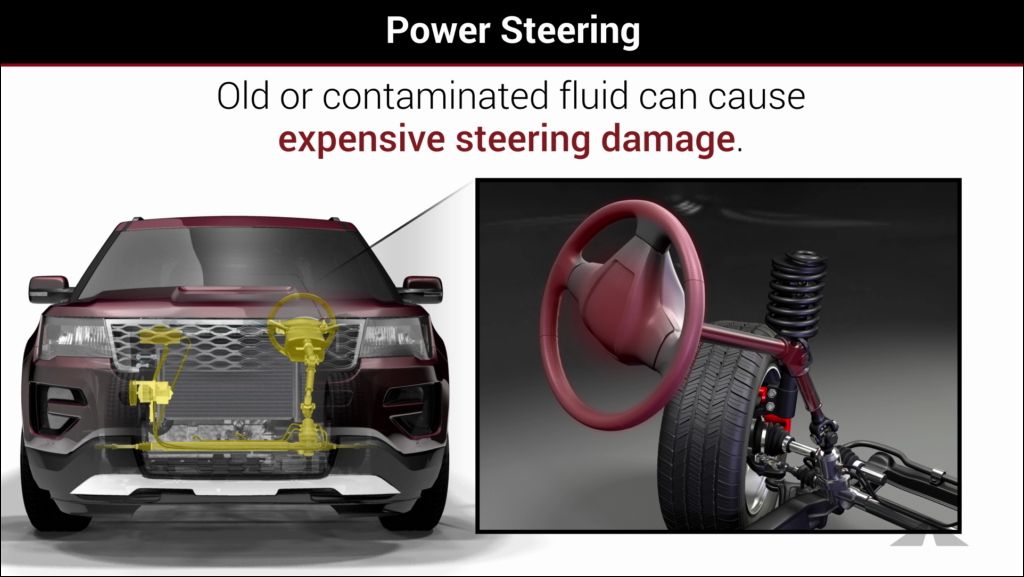Steering a vehicle these days doesn’t take much effort, but if you got behind the wheel back before power steering was invented, you’d need to practically have the strength of Hercules to turn the wheel.
The first power steering systems widely available changed everything. Chrysler introduced its Hydraguide power system in 1951. The “hydra” was for a hydraulic pump. It pressurized fluid that multiplied the force applied to the steering wheel so it was easier to turn the wheels on the ground. That pump got power from a belt attached to the engine, but unfortunately it wasted a lot of energy in the process. Plus, the system of hoses and pumps required a fair amount of maintenance and repair. Some say this system provides the most “natural” steering experience of power systems.
Recently, automakers have turned to electric power steering. It gets its power from the car’s electrical battery and charging system and uses an electric motor to turn the wheels. Since it’s not powered by the mechanical energy of your vehicle’s engine, electric power steering increases fuel economy. Electric power steering also doesn’t require hoses and fluids, meaning there are fewer things that can go wrong. That means less maintenance.
There’s a third system that combines both of the others, called electro-hydraulic power steering. In this system, the hydraulic power steering pump is powered by an electric motor and, some say, gives the driver that more natural feel of hydraulic systems.
Because steering is so important for the safe operation of any vehicle, it’s essential to make sure yours is working the way it should. Different types of systems require different kinds of upkeep. Regular, scheduled maintenance according to the manufacturer’s recommendations should help keep your steering in top shape so you can avoid any sudden steering failures. Bring your vehicle to us so a technician can inspect your steering system. And, of course, if you notice any steering problems, make an appointment right away to have those issues looked at. Now that’s one stop that makes sense!
Tylers Auto TV
12485 SW MAIN ST
TIGARD, OR 97223
(503) 639-5588
http://www.tylersautomotive.com

